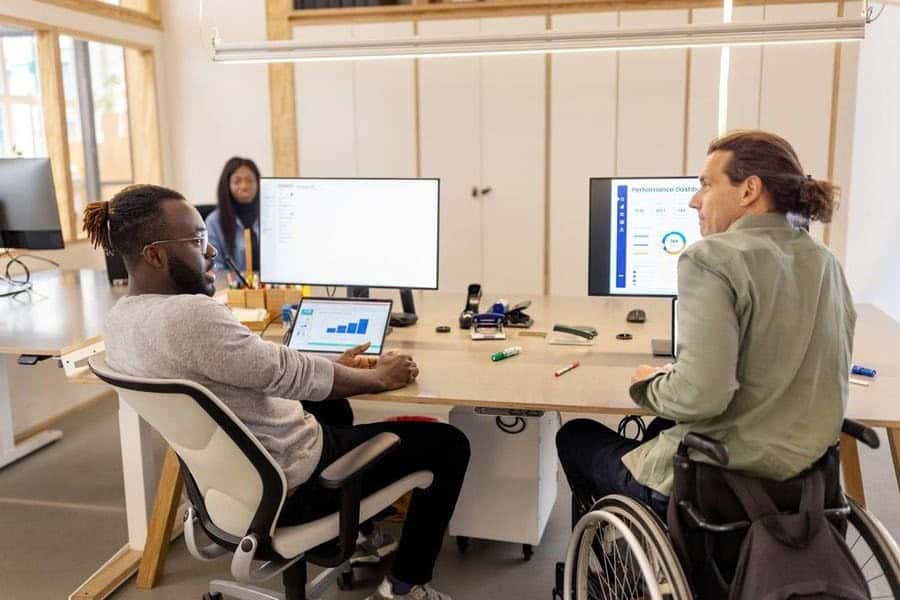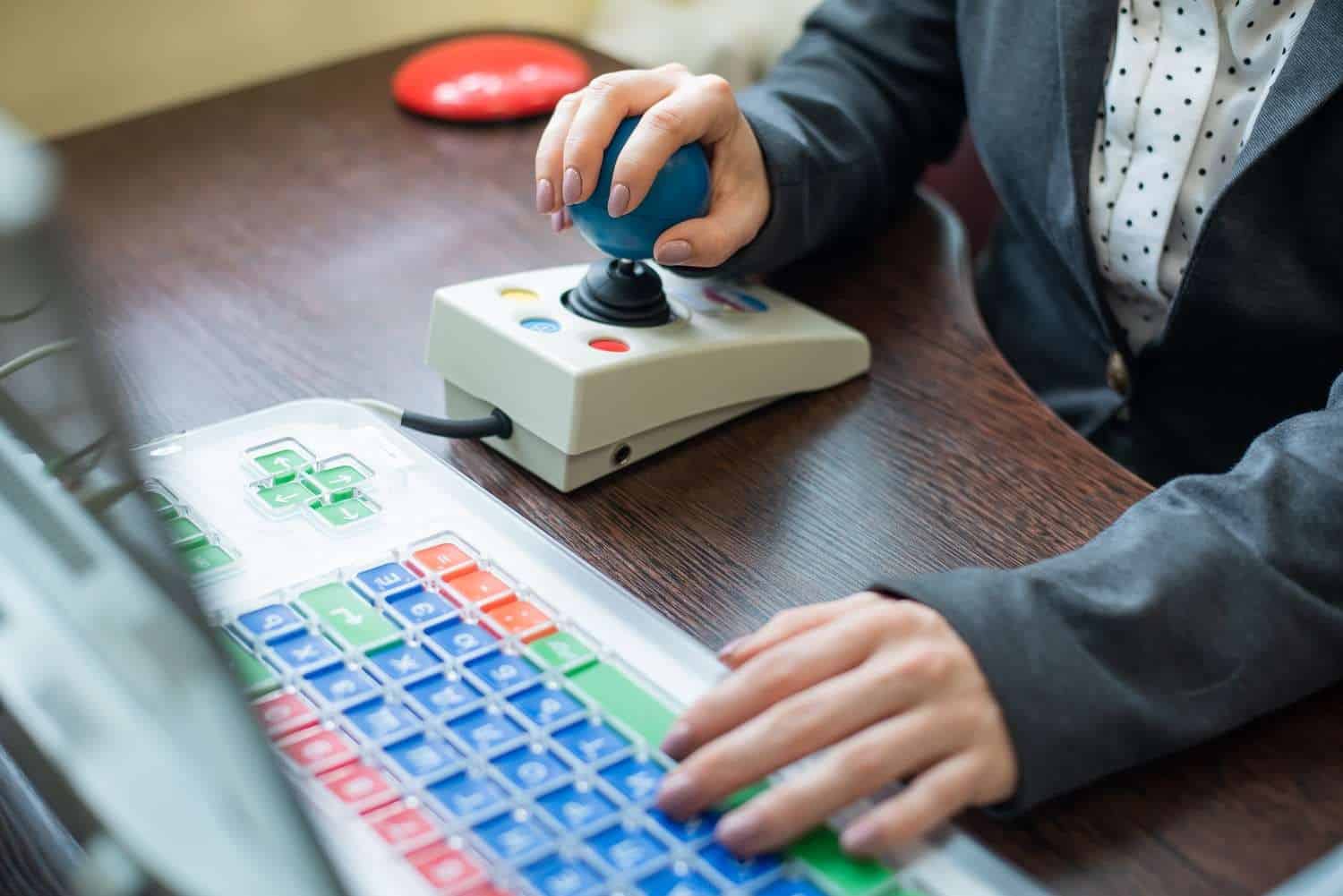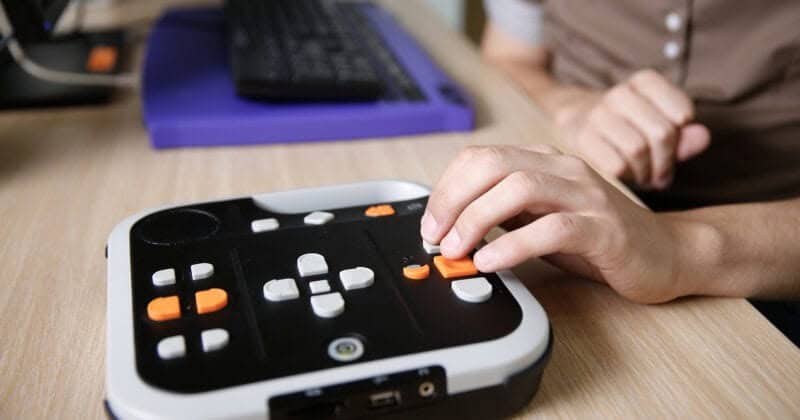Table of Contents
In the modern workplace, the concept of ergonomics has evolved beyond simply optimizing physical comfort to encompass inclusivity and accessibility for all employees. Assistive technologies play a crucial role in this paradigm shift, providing tools and solutions designed to accommodate individuals with disabilities and enhance their productivity and comfort in office settings.
What Are Assistive Technologies?

Assistive technologies refer to devices, software, or equipment specifically designed to assist individuals with disabilities in performing tasks that may be challenging due to their physical or cognitive limitations.
In the context of office ergonomics, these technologies aim to create a more accessible and supportive work environment for employees with disabilities, enabling them to perform their duties effectively and comfortably.
Types of Assistive Technologies

Accessible Workstations
Adjustable desks, ergonomic chairs, and workstation accessories such as keyboard trays and monitor arms can be customized to accommodate individuals with mobility impairments or other physical disabilities. These ergonomic solutions promote proper posture and reduce the risk of strain or injury.
Screen Readers and Magnifiers
For employees with visual impairments, screen reading software and magnification tools enable them to access digital content and navigate computer interfaces more easily. These technologies convert text on screens into synthesized speech or braille, allowing users to interact with software applications and websites effectively.
Speech Recognition Software
Individuals with mobility impairments or conditions such as carpal tunnel syndrome can benefit from speech recognition software, which allows them to control computers and dictate text using their voice. This technology not only enhances accessibility but also increases productivity by enabling hands-free operation of devices and software.
Alternative Input Devices
Traditional computer mice and keyboards may pose challenges for individuals with limited dexterity or motor control. Alternative input devices such as trackballs, joysticks, and ergonomic keyboards offer customized solutions tailored to the specific needs of users with disabilities, allowing them to interact with computers more comfortably and efficiently.
Assistive Listening Devices
Inclusive communication is essential in the workplace, and assistive listening devices such as hearing aids, captioning systems, and amplified telephones help individuals with hearing impairments participate fully in meetings, presentations, and other collaborative activities.
Task Automation Tools
Automation software and workflow management systems can simplify complex tasks and streamline processes for employees with cognitive disabilities or executive functioning challenges. These tools help individuals organize their work, set reminders, and prioritize tasks, reducing cognitive load and promoting efficiency.
Benefits of Assistive Technologies in Office Ergonomics

Enhanced Accessibility
By removing barriers to participation and accommodating diverse needs, assistive technologies promote inclusivity and create a more welcoming work environment for employees with disabilities.
Improved Productivity
Assistive technologies empower individuals to perform their job duties more effectively, reducing reliance on manual assistance and increasing autonomy and efficiency in completing tasks.
Reduced Risk of Injury
Ergonomic solutions such as adjustable furniture and input devices promote proper posture and ergonomic alignment, reducing the risk of musculoskeletal disorders and workplace injuries among employees with disabilities.
Compliance with Accessibility Standards
Implementing assistive technologies demonstrates a commitment to compliance with accessibility standards and regulations, fostering a culture of diversity and inclusion within the organization.
Final Note
Assistive technologies play a pivotal role in promoting accessibility, inclusivity, and productivity in the modern workplace. Embracing assistive technologies not only benefits individuals with disabilities but also enriches the overall workplace culture, driving innovation, and fostering a more equitable and supportive organizational ethos.
